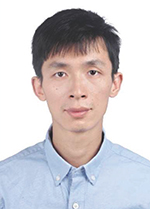Instructors/Speakers
Prof. Bo WU
Professor
South China Academy of Advanced Optoelectronics
South China Normal University in Guangzhou
China
Abstract
Recently, perovskite materials have gained widespread attentions due to their high potential in optoelectronic applications from solar cells, light-emitting diodes, lasers to photodetectors. For example, the certificated power conversion efficiencies of perovskite solar cells have exceeded 25%, on par with that of silicon. The external quantum efficiencies of perovskite green and red light emitting diodes have reached 20%, a value approaching the best performed OLEDs. Despite the rapid progresses in improving the efficiencies, there remain a lot of questions to be answered about the physical mechanisms lying behind the great successes. In this talk, I will focus on the interactions between the electrons and the perovskite lattice, which are complicated by the soft lead-halide bonds, the hybrid nature of the lattice comprising of both organic and inorganic parts. The talk will be divided into two parts: (1) the thermal-driven dynamical Rashba splitting in lead perovskite single crystals and (2) the strong electron-phonon interactions in bismuth perovskite single crystals. In the first part, through temperature-dependent photoluminescence, Raman spectroscopy and molecular dynamical simulations, we revealed that thermal driven lattice anharmonic polar motions result in dynamical Rashba splitting in lead halide perovskite single crystals, which may lead to indirect tail states and prolong the carrier lifetimes. In the second part, through photoluminescence and transient reflection techniques, we show that a bismuth perovskite single crystal has a carrier mobility of only 0.05 cm2s-1V-1 and relative bright indirect emission, which imply strong carrier localization effect by the electron-phonon coupling in the system. These findings provide significant insights on the underlying physical mechanisms of perovskites, which may pave the way to further development of perovskite optoelectronic materials and their commercialization.
Biography



